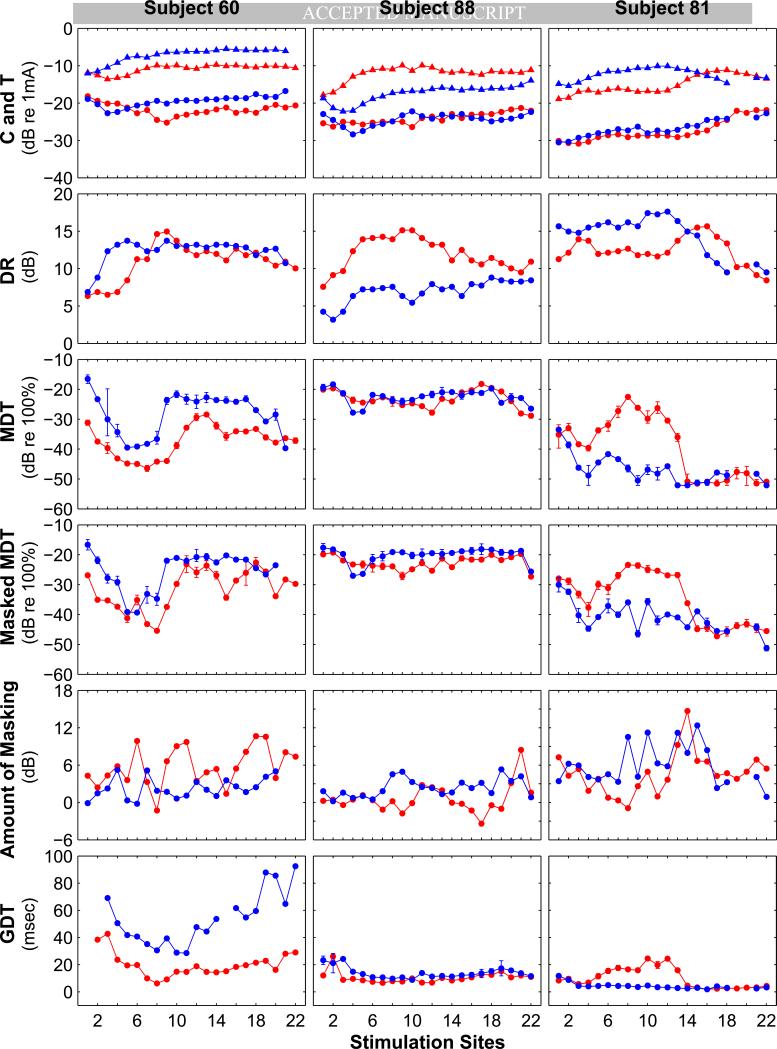Fig. 2.
Across-site patterns of various psychophysical measures for three human subjects with Nucleus CI24R(CS) or Freedom implants (one subject per column). All three subjects had bilateral implants. Functions for the right ear are shown in red and those for the left ear are shown in blue. Across site patterns for 7 psychophysical measures are shown. Monopolar stimulation with 500 ms trains of 50 μs/phase pulses at 900 pulses/s (pps) was used in all cases except gap detection where the pulse rate was 1000 pps. Top row: Triangles = maximum comfortable loudness levels (C levels); Circles = detection threshold levels (T levels). Second row: Dynamic ranges (C levels minus T levels). Third row: Modulation detection thresholds (MDTs) measured at 50% of the dynamic range (50% DR). Sinusoidal modulation of phase duration at 10 Hz around a mean of 50 μs/phase was used. Units for MDTs are modulation depth in dB re 100% modulation. Fourth row: MDTs measured in the presence of an unmodulated pulse train (masker) presented at 50% DR on an adjacent channel and interleaved with the modulated pulse train. The masker site was the next apical site to the site where the MDTs were measured in all cases except when the MDTs were measured for site 22 and the masker was on the adjacent basal site. Fifth row: Amount of masking = masked MDTs (data from row 4) minus nonmasked MDTs (data from row 3). Sixth row: Gap detection thresholds (GDTs) measured at 50% DR. Details o f the psychophysical procedures are similar to those reported in Pfingst et al., 2008 and Garadat and Pfingst, 2011.

